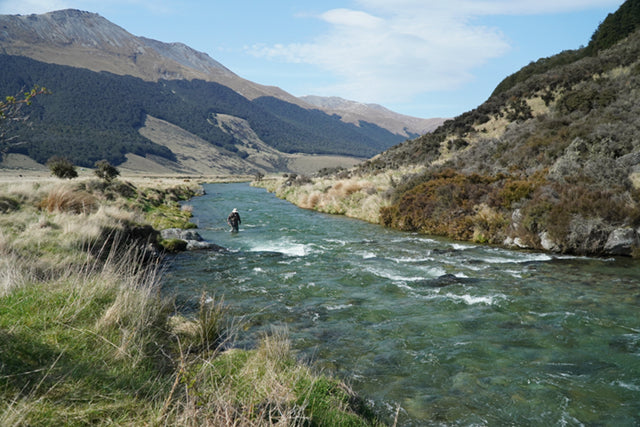Friday Fly Day - Kyle's Creeper

Early season means often unpredictable flows and when October opens low and clear, I often feel uneasy as to what is to come.
With the ground already loaded from run off and winter moisture rainfall often runs directly into the streams meaning high flows can occur at the drop of a hat. It is for this reason I always keep a selection of larger nymphs in my box, some double tungsten for fuller flows but also some large but light patterns for the slacker pools and edgewaters.
Following the cooler temperatures of winter and longer growth periods our nymphs will be larger than those of the summer cycle, 12’s and 14’s sit pride of place in October in favour of the 16’s and 18’s of the warmer months, however there is always a pattern that stands out and is fondly attached whenever the rivers rise - Archichauliodes diversus. Also known as the Toe Biter or Creeper, the Dobsonfly larvae is centipede like in appearance with pincer like jaws and a black thorax and head. Mature larvae are commonly around 25mm to 30mm long.
Why am I telling you this? Dobsonfly larvae are found in most clean water, bouldery streams and while strongly attached to the rocks, in times of high flow become a much sought after food source for trout. At a larger size they are easily noticeable in discoloured water and will easily stand out in preference to other, lesser food items in the drift.
And of course we have a cracker of a pattern for you...
New to the Kyle Adams collection is the Kyle’s Creeper, available in any size you want as long as it’s an 8.

I simply fish them singularly under a bright indicator through the bouldery runs, at the base of aggressive riffles where they tumble over into the pools, or along the edge of the slack water, where trout love to sit in times of fuller, or discoloured flows. Bigger flows call for bigger flies and often heavier weight. I always carry a tub of Loon Black drops for when needed, so don’t be afraid to get these flies right to the streambed.
